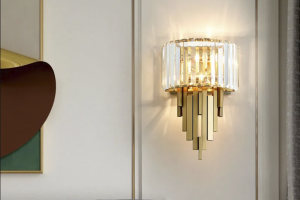Introduction
Geometric shapes are fundamental parts of our visual world. These shapes include simple polygons such as squares, triangles, and circles, as well as complex shapes like fractals, tiling patterns, and spirals. Geometric shapes appear everywhere, from nature to human-made objects, architecture, art, and design. Understanding the properties of geometric shapes can provide insights into the principles of symmetry, harmony, and balance that underlie our perception of the world. In this article, we will explore the world of geometric shapes, focusing on their symmetry, proportions, and patterns.
Symmetry
Symmetry is a property of objects that exhibit the same structure or pattern on both sides of a dividing line or surface. In mathematics, symmetry refers to the invariance of a shape or a pattern under a certain group of transformations, such as reflection, rotation, or translation. The study of symmetry has been a central topic in geometric thinking since ancient times, from the Greek philosophers to contemporary science.
Symmetry occurs in many forms in nature, such as the radial symmetry of flowers, the bilateral symmetry of animals, or the fractal symmetry of snowflakes. Symmetrical designs are also common in art, architecture, and graphic design, where they can create a sense of balance and visual harmony.
Bilateral Symmetry in Animals
Bilateral symmetry is a type of symmetry that occurs when an object can be divided into two equal halves that are mirror images of each other. This type of symmetry is common in animals, such as insects, fish, and mammals. Bilateral symmetry allows for the specialization of body parts and movement, as well as the development of sensory organs and neural systems.
Fractal Symmetry in Natural Patterns
Fractal symmetry is a type of self-similarity that occurs when a shape or a pattern repeats itself at different scales. Fractal symmetry is common in natural patterns, such as the branching patterns of trees, the shapes of clouds, or the coastlines of islands. Fractal patterns exhibit a degree of complexity and irregularity that can lead to aesthetically pleasing and intriguing visual effects.
Proportions
Proportions are a fundamental aspect of geometry that determine the relative sizes and arrangements of shapes. Proportions can be expressed mathematically as ratios, such as the length of one side of a triangle divided by the length of another side. Proportions play a crucial role in architecture, design, and art, where they can create a sense of scale, perspective, and composition.
The golden ratio is a special proportion that has been studied and celebrated throughout history for its supposed aesthetic qualities. The golden ratio is a ratio of two quantities, such that the ratio of the smaller quantity to the larger quantity is the same as the ratio of the larger quantity to the sum of the two quantities. The golden ratio occurs in many natural and human-made forms, from the spiral patterns of seashells to the proportions of classical buildings and modern designs.
The Golden Ratio in Art and Design
The golden ratio has been used in art and design to create harmonic and balanced compositions. The golden ratio can be found in the proportions of the human body, the layout of paintings and photographs, and the design of logos, fonts, and user interfaces. The use of the golden ratio in art and design has been debated and criticized by some, who argue that it can lead to formulaic and contrived results.
The Rule of Thirds in Photography
The rule of thirds is a compositional guideline used in photography and film that divides the image into three equal horizontal and vertical sections. The points of intersection of these lines are considered to be the most effective points for placing the main subjects of the image. The rule of thirds is based on the idea that the human eye is naturally drawn to these points of visual interest, and that a composition that follows this rule will be more visually appealing.
Patterns
Patterns are repetitive arrangements of shapes, colors, or textures that create a visual rhythm and structure. Patterns are found in many natural and human-made forms, from the stripes of animals to the tessellations of Islamic art. Patterns can be created by combining simple shapes in various arrangements and orientations, or by using mathematical algorithms and computer software.
Patterns have been studied for their aesthetic and mathematical properties, as well as for their cultural and historical significance. Patterns can convey meanings and values, such as the religious symbolism of mandalas, the political message of camouflage, or the personal expression of tattoos.
Tiling Patterns in Islamic Art
Tiling patterns are a type of repetitive pattern that covers a two-dimensional surface without gaps or overlaps. Tiling patterns have been a staple of Islamic art and architecture, where they have been used to decorate mosques, palaces, and madrasas. Tiling patterns in Islamic art often feature geometric shapes, such as squares, triangles, and hexagons, arranged in complex and symmetrical arrangements. Tiling patterns in Islamic art have been celebrated for their beauty, precision, and spiritual symbolism, as well as for their mathematical and geometric properties.
Fractal Patterns in Computer Graphics
Fractal patterns have been used in computer graphics to create complex and realistic images of natural phenomena, such as mountains, trees, and clouds. Fractal patterns can be generated by recursive algorithms that repeat a simple shape or pattern at different scales and orientations. Fractal patterns have been studied for their mathematical and algorithmic properties, as well as for their artistic and visual effects.
Conclusion
Geometric shapes are more than just simple parts of our visual world. They reflect fundamental principles of symmetry, proportion, and pattern that underlie our perception of the world. Studying geometric shapes can provide insights into the mathematical and aesthetical properties of natural and human-made forms, as well as into the cultural and historical significance of shapes and patterns. By exploring the world of geometric shapes, we can enhance our appreciation and understanding of the visual and mathematical ingredients of our world.




More Posts
Stunning Vintage Opaline Lights: Illuminating Homes with Timeless Elegance
Bringing Versatility to Light: Exploring the Benefits of Dual Light Technology
Shining Light on E14 Bulbs: The Ultimate Guide to Understanding and Using Them